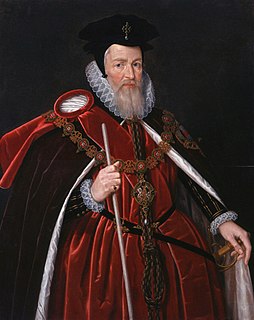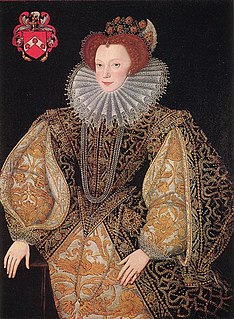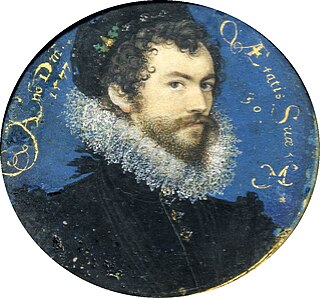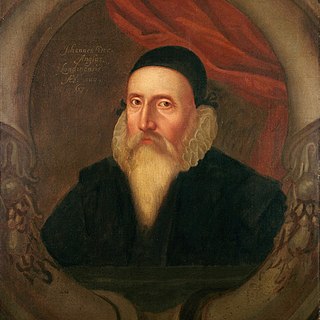
Triumff: Her Majesty's Hero is a novel written by Dan Abnett and first published in October 2009 by Angry Robot. The novel unites elements from the fantasy, science-fiction and steampunk genres.

Triumff: Her Majesty's Hero is a novel written by Dan Abnett and first published in October 2009 by Angry Robot. The novel unites elements from the fantasy, science-fiction and steampunk genres.
The novel takes place in a warped version of the present, the Elizabethan Age. Due to the (re-)discovery of the 'Arte of Magick' during the Renaissance, much of the economic and societal workings are pre-industrial in nature, such as the city of London being powered by energy magickally derived from the Cantrips, even though exceptions exist. Politically, Britain and Spain were united through the marriage of Elizabeth I of England and Philip II of Spain, forming the 'Unity', a huge empire comprising all territories under British or Spanish possession at that time. In time, the power seems to have shifted strongly from Spain to England, the Queen and the British Court, with the Unity being ruled by Elizabeth XXX. as a quasi-absolute monarch at the time of the novel (i.e. in 2009/2010). Much of the current world is unknown and Australia has been only recently discovered by Rupert Triumff. The system of exploration is characterized by so-called 'Letters of Passage' granting an explorer the right to claim, explore and pillage unknown and unclaimed territories in the name of the Queen. The Elizabethan society and its reliance on magick are contrasted by the Australian society of Beach, which discarded the use of magick in favor of technology and has achieved a level of development comparable to that of modern-day industrialized countries.
The plot revolves around Rupert Triumff, explorer and adventurer, who has only recently come back from an expedition to the South Sea, resulting in the discovery of Australia and Beach. Coming back to England, Triumff questions the over-reliance of the Unity on magick and fears that Beach might be destroyed by Unity, thus delaying his report to the Queen. However, while Triumff demures, a circle of conspirators close to the British Court have set their eyes on Australia and want to exploit the new discovery to accrue their power. It is in that circle of conspirations that Triumff becomes increasingly entangled and will see him facing a threat to the monarchy, Unity and maybe the world itself.
The novel was generally well-received, with Unbound stating it to be "delightful, often original and hugely entertaining read" and Mike Carey describing it as "brilliant occult-comedy-historical adventure". [1]

Elizabeth I was Queen of England and Ireland from 17 November 1558 until her death in 1603. Sometimes referred to as the Virgin Queen, Elizabeth was the last of the five monarchs of the House of Tudor.

The Elizabethan era is the epoch in the Tudor period of the history of England during the reign of Queen Elizabeth I (1558–1603). Historians often depict it as the golden age in English history. The symbol of Britannia was first used in 1572, and often thereafter, to mark the Elizabethan age as a renaissance that inspired national pride through classical ideals, international expansion, and naval triumph over Spain.

Robert Dudley, 1st Earl of Leicester, was an English statesman and the favourite of Elizabeth I from her accession until his death. He was a suitor for the Queen's hand for many years.

William Cecil, 1st Baron Burghley was an English statesman, the chief adviser of Queen Elizabeth I for most of her reign, twice Secretary of State and Lord High Treasurer from 1572. In his description in the Encyclopædia Britannica Eleventh Edition, Albert Pollard wrote, "From 1558 for forty years the biography of Cecil is almost indistinguishable from that of Elizabeth and from the history of England."

The history of Antarctica emerges from early Western theories of a vast continent, known as Terra Australis, believed to exist in the far south of the globe. The term Antarctic, referring to the opposite of the Arctic Circle, was coined by Marinus of Tyre in the 2nd century AD.

Sir Martin Frobisher was an English seaman and privateer who made three voyages to the New World looking for the North-west Passage. He probably sighted Resolution Island near Labrador in north-eastern Canada, before entering Frobisher Bay and landing on present-day Baffin Island. On his second voyage, Frobisher found what he thought was gold ore and carried 200 tons of it home on three ships, where initial assaying determined it to be worth a profit of £5.20 per ton. Encouraged, Frobisher returned to Canada with an even larger fleet and dug several mines around Frobisher Bay. He carried 1,350 tons of the ore back to England, where, after years of smelting, it was realized that the ore was a worthless rock containing the mineral hornblende. As an English privateer, he plundered riches from French ships. He was later knighted for his service in repelling the Spanish Armada in 1588.

Dan Abnett is an English comic book writer and novelist. He has been a frequent collaborator with fellow writer Andy Lanning, and is known for his work on books for both Marvel Comics, and their UK imprint, Marvel UK, since the 1990s, and also 2000 AD. He has also contributed to DC Comics titles, and his Warhammer Fantasy and Warhammer 40,000 novels and graphic novels for Games Workshop's Black Library now run to several dozen titles and have sold over two million copies. In 2009 he released his first original fiction novels through Angry Robot books.

Lettice Knollys, Countess of Essex and Countess of Leicester, was an English noblewoman and mother to the courtiers Robert Devereux, 2nd Earl of Essex, and Lady Penelope Rich. By her second marriage to Elizabeth I's favourite, Robert Dudley, Earl of Leicester, she incurred the Queen's unrelenting displeasure.

Nicholas Hilliard was an English goldsmith and limner best known for his portrait miniatures of members of the courts of Elizabeth I and James I of England. He mostly painted small oval miniatures, but also some larger cabinet miniatures, up to about 10 inches tall, and at least two famous half-length panel portraits of Elizabeth. He enjoyed continuing success as an artist, and continuing financial troubles, for forty-five years. His paintings still exemplify the visual image of Elizabethan England, very different from that of most of Europe in the late sixteenth century. Technically he was very conservative by European standards, but his paintings are superbly executed and have a freshness and charm that has ensured his continuing reputation as "the central artistic figure of the Elizabethan age, the only English painter whose work reflects, in its delicate microcosm, the world of Shakespeare's earlier plays."

Westward Ho! is an 1855 historical novel written by British author Charles Kingsley. The novel was based on the experiences of Elizabethan privateer Amyas Preston, who sets sail with Francis Drake, Walter Raleigh and other privateers to the New World, namely the Preston Somers Expedition and Raleigh's El Dorado Expedition where they battle with the Spanish.

The monarchy of Australia is Australia's form of government embodied by the Australian sovereign and head of state. The Australian monarchy is a constitutional monarchy, modelled on the Westminster system of parliamentary government, while incorporating features unique to the Constitution of Australia.

John Dee was an English mathematician, astronomer, astrologer, teacher, occultist, and alchemist. He was the court astronomer for, and advisor to, Elizabeth I, and spent much of his time on alchemy, divination, and Hermetic philosophy. As an antiquarian, he had one of the largest libraries in England at the time. As a political advisor, he advocated the foundation of English colonies in the New World to form a "British Empire", a term he is credited with coining.

Marcus Gheeraerts was a Flemish artist working at the Tudor court, described as "the most important artist of quality to work in England in large-scale between Eworth and van Dyck" He was brought to England as a child by his father Marcus Gheeraerts the Elder, also a painter. He became a fashionable portraitist in the last decade of the reign of Elizabeth I under the patronage of her champion and pageant-master Sir Henry Lee. He introduced a new aesthetic in English court painting that captured the essence of a sitter through close observation. He became a favorite portraitist of James I's queen Anne of Denmark, but fell out of fashion in the late 1610s.
England under Elizabeth I's reign, the Elizabethan Era, was ruled by the very structured and complicated Elizabethan government. It was divided into the national bodies, the regional bodies, the county, community bodies and the court system.

The Armada Portrait of Elizabeth I of England is the name of any of three surviving versions of an allegorical panel painting depicting the Tudor queen surrounded by symbols of royal majesty against a backdrop representing the defeat of the Spanish Armada in 1588.

The portraiture of Elizabeth I spans the evolution of English royal portraits in the early modern period (1400/1500-1800), depicting Queen Elizabeth I of England and Ireland (1533–1603), from the earliest representations of simple likenesses to the later complex imagery used to convey the power and aspirations of the state, as well as of the monarch at its head.

Mary, Queen of Scots, has inspired artistic and cultural works for more than four centuries. The following lists cover various media, enduring works of high art, and recent representations in popular culture. The entries represent portrayals that a reader has a reasonable chance of encountering rather than a complete catalogue.

The English overseas possessions, also known as the English colonial empire, comprised a variety of overseas territories that were colonised, conquered, or otherwise acquired by the former Kingdom of England during the centuries before the Acts of Union of 1707 between the Kingdom of England and the Kingdom of Scotland created the Kingdom of Great Britain. The many English possessions then became the foundation of the British Empire and its fast-growing naval and mercantile power, which until then had yet to overtake those of the Dutch Republic, the Kingdom of Portugal, and the Crown of Castile.

The Ruby Jubilee of Elizabeth II in 1992 marked the 40th anniversary of the accession of Queen Elizabeth II on 6 February 1952. Contrary to her Silver Jubilee in 1977, there were no widespread public celebrations of the Ruby Jubilee; it was a low-profile event. However, there were some observances to mark the milestone.